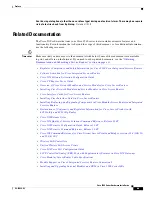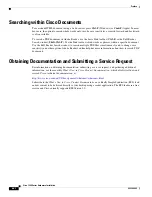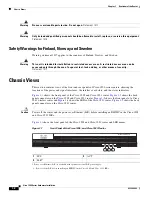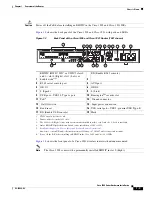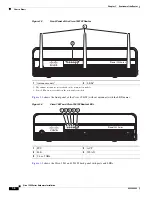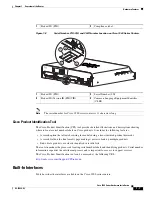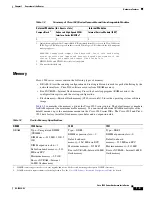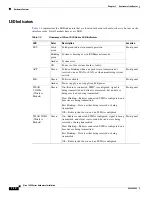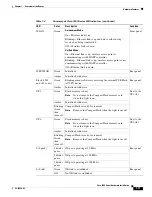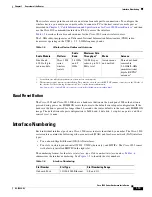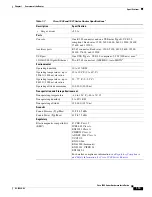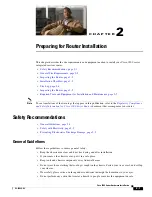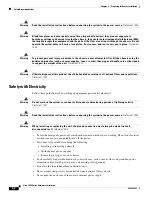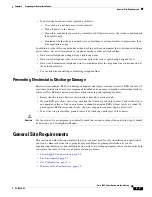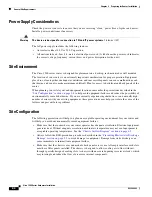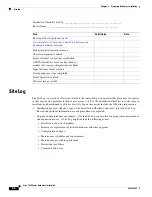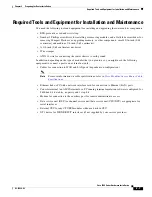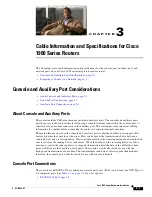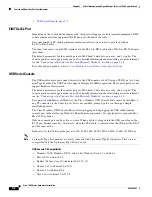
1-13
Cisco 1900 Series Hardware Installation
OL-19084-02
Chapter 1 Overview of the Router
Interface Numbering
The wireless access point does not have an external console port for connections. To configure the
wireless device, you must use a console cable to connect a PC to the host router’s console port as
described in
Chapter 3, “Cable Information and Specifications for Cisco 1900 Series Routers,”
and then
use the Cisco IOS command-line interface (CLI) to access the interface.
Table 1-5
describes the radios and antennas for the Cisco 1900 series wireless routers.
The 5-GHz radio incorporates an Unlicensed National Information Infrastructure (UNII) radio
transceiver operating in the UNII 1, 2, 3, 5-GHz frequency bands.
Baud Reset Button
The Cisco 1905 and Cisco 1921 ISRs have a baud reset button on the back panel. When the button is
pressed during power on, ROMMON resets the router to the default console port configuration. If the
baud reset button is pressed for longer than 30 seconds, the router defaults to the read-only ROMMON
image. The default console port configuration is 9600 baud, 8 data bits, 1 stop bit, no parity, and flow
control is set to none.
Interface Numbering
Each individual interface (port) on a Cisco 1900 series router is identified by a number. The Cisco 1900
series routers contains the following wide-area network (WAN) and local-area network (LAN) interface
types:
•
Two onboard Gigabit Ethernet (GE) LAN interfaces.
•
Two slots in which you can install WICs, VWICs (data only), and HWICs. The Cisco 1905 comes
with a factory installed EHWIC in the right slot.
The numbering format for the slots is
interface-type 0/slot-number
/
interface-number
.
Table 1-6
summarizes the interface numbering. See
Figure 1-5
to identify the slot numbers.
Table 1-5
Wireless Device Radios and Antennas
Radio Module
Platform
Radio
Band
Maximum Data
Throughput
1
1.
Actual data rate is highly dependent on your wireless environment.
Mode
Antenna
Dual-band
802.11a/b/g/n
radio module
Cisco 1900
series
wireless
routers
2.4 GHz
and 5
GHz
100 Mb/s per
radio, up to 200
Mb/s total
Autonomous
and unified
Three dual-band
removable
2.4-GHz/5-GHz
omnidirectional
dipole RP-TNC
antennas
2
2.
The antennas require some minor installation. They must be screwed onto the RP-TNC antenna connectors on the I/O side of
the chassis. See the following document on Cisco.com for feature information:
http://www.cisco.com/en/US/docs/routers/access/wireless/hardware/notes/antdip.html
Table 1-6
Interface Numbering
Slot Number
Slot Type
Slot Numbering Range
Onboard Ports
10/100/1000 Ethernet
0/0 and 0/1

